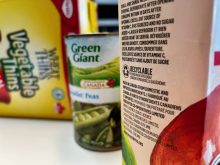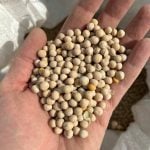The number of Manitoba farms that direct-market products grew by 12 per cent between 2016 and 2020, a new report indicates.
The report, released this summer, used sources including the 2021 federal census of agriculture. It shows that in 2020, just over 1,000 farms were directly selling food to customers, up from 900 in 2016.
Direct sales in Manitoba still lag other provinces, with 6.9 per cent of farms here reporting direct sales, compared to the Canadian average of 13.6 per cent. That is likely due to a high number of grain and oilseed farms in the province.
Read Also

Finally getting paid for sustainable farming?
Alberta project says they might have a line on a workable ecosystem credit model to reward farmers for sustainability, and Manitoba might be next
However, the increase in direct sales was well above the national average – 12 per cent compared to 5.7 per cent.
Interest in local food grew after the onset of the pandemic in 2020, said Kristie Beynon, executive director of Direct Farm Manitoba, which represents direct-selling farmers and farmers markets.
A “shortly supply chain,” and resilient, local food became important to many people, she added.
Because much of the report data comes from 2020, it may be skewed by the pandemic experience, said Beynon. For instance, a lower proportion of sales came through farmers markets in 2020 than in 2016 but many markets were operating under restrictions that year and some didn’t open at all.
Customers may also have been nervous to attend markets so they turned to other methods.
Farmers market attendance only returned to average levels this August, Beynon said.
The report indicates direct deliveries to consumers accounted for a large proportion of sales but there’s no 2016 data with which to compare.
“Direct delivery has definitely increased due to COVID,” Beynon said.
Some farmers, particularly livestock producers, deliver once or twice a month to a central location, such as a community centre, where customers meet them to pick up goods. It’s not clear if this is included in the direct delivery category.
Direct Farm Manitoba received funding through the Canadian Agricultural Partnership to help farmers set up websites and online stores.
Other farmers tried door-to-door delivery during the pandemic, “to help people feel safe,” Beynon said.
She noted some farmers found this challenging because it took them away from the farm and added another level of complexity.
Community Supported Agriculture (CSA) subscriptions also rose in 2020, but have since leveled off as customers return to farmers markets, Beynon said.
The report shows a modest increase in Manitoban farms using CSA subscriptions and a decrease in Canada overall.
Most farms’ direct sales accounted for only a portion of their revenue. Slightly more than half obtained between one and 25 per cent of income from direct sales, and 20 to 25 per cent received all of their income from direct sales.
More than 70 per cent of all fruit and tree nut farms sold directly to consumers. Thirty-seven per cent of vegetable and melon farms direct marketed, while nearly 20 per cent of greenhouses, nurseries and floriculture operations marketed directly.
Of grain and oilseed farms, less than two per cent marketed directly. Just over six per cent of cattle farmers did so, as did 11 per cent of hog farmers.
















